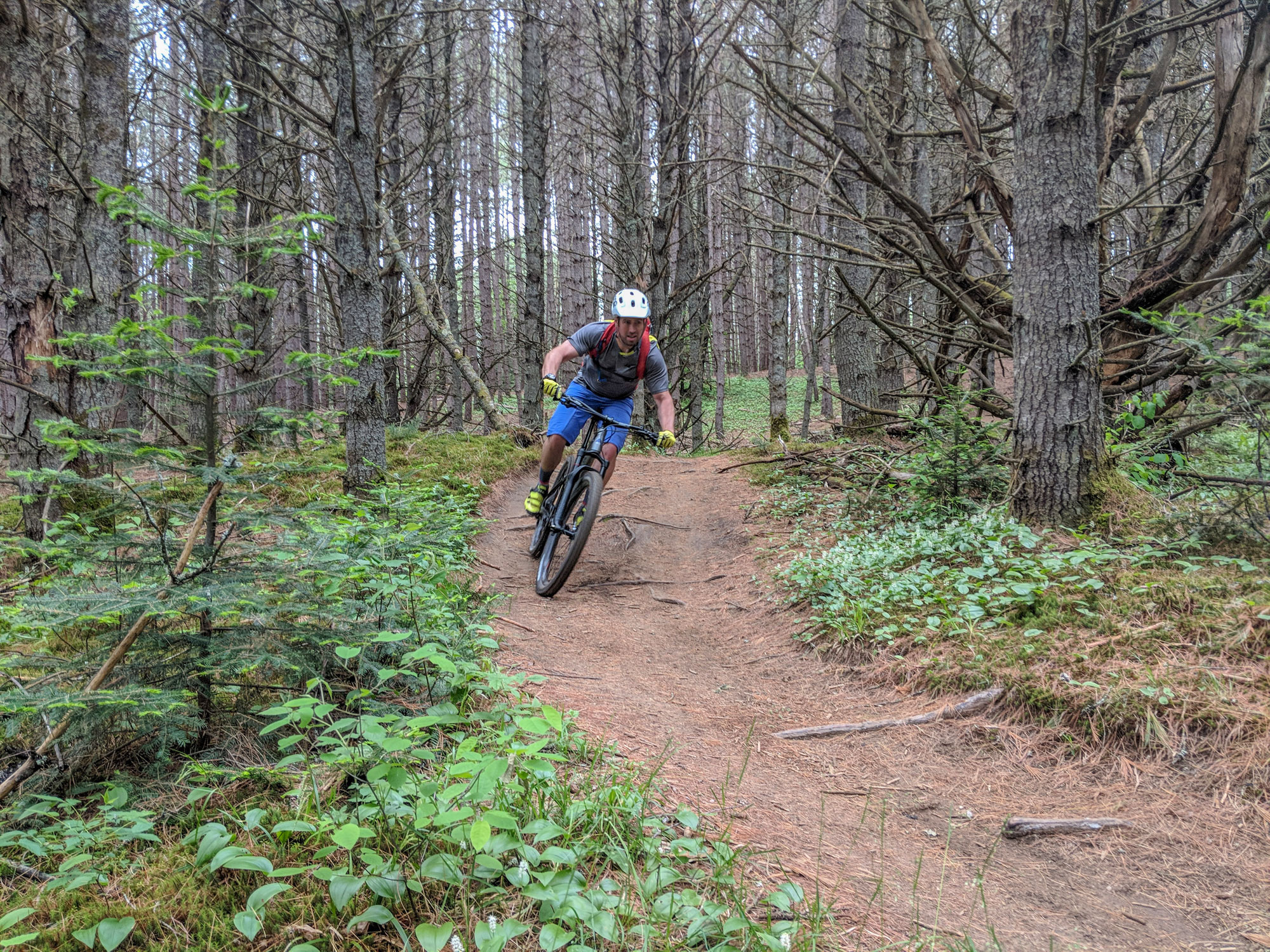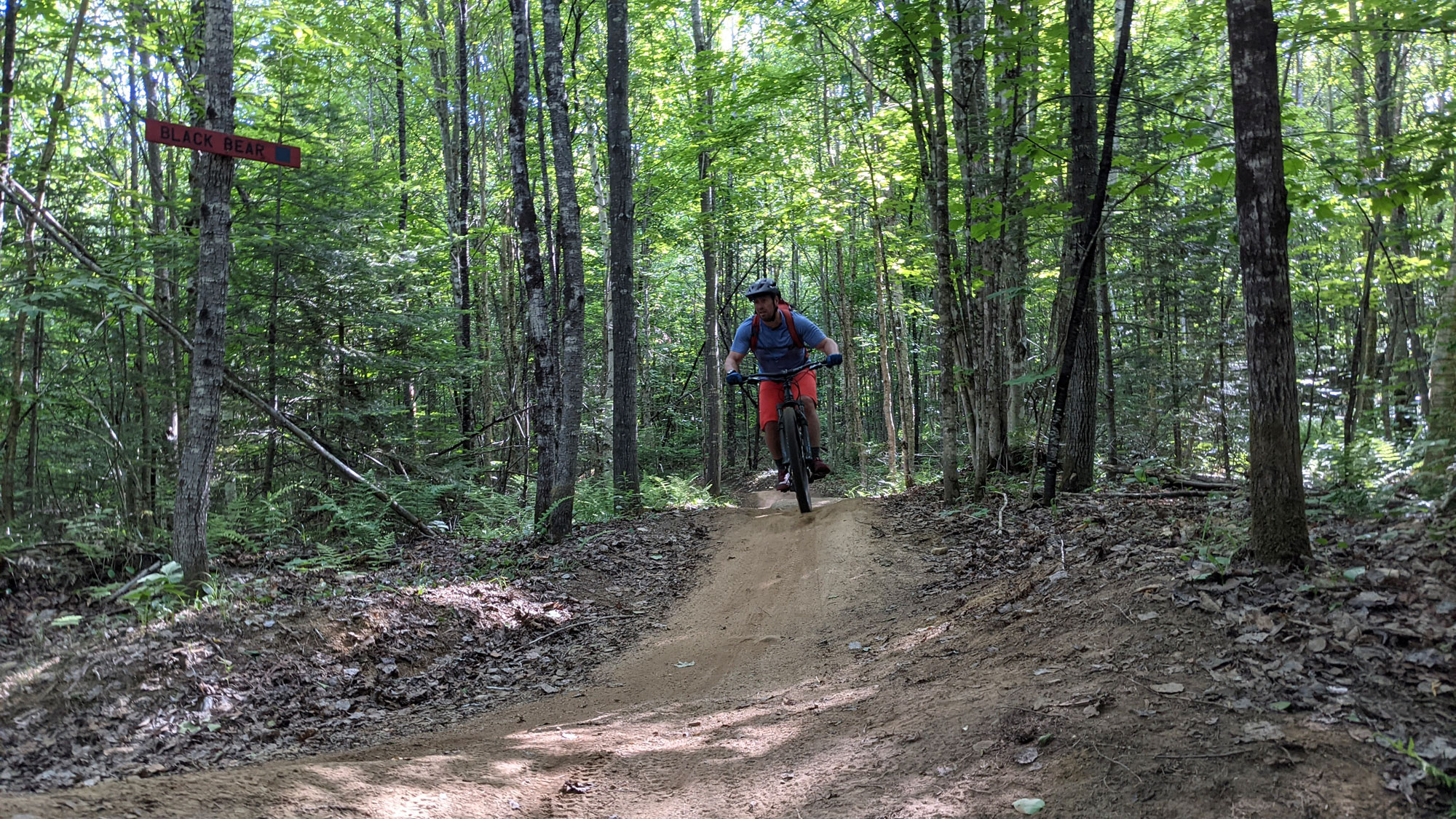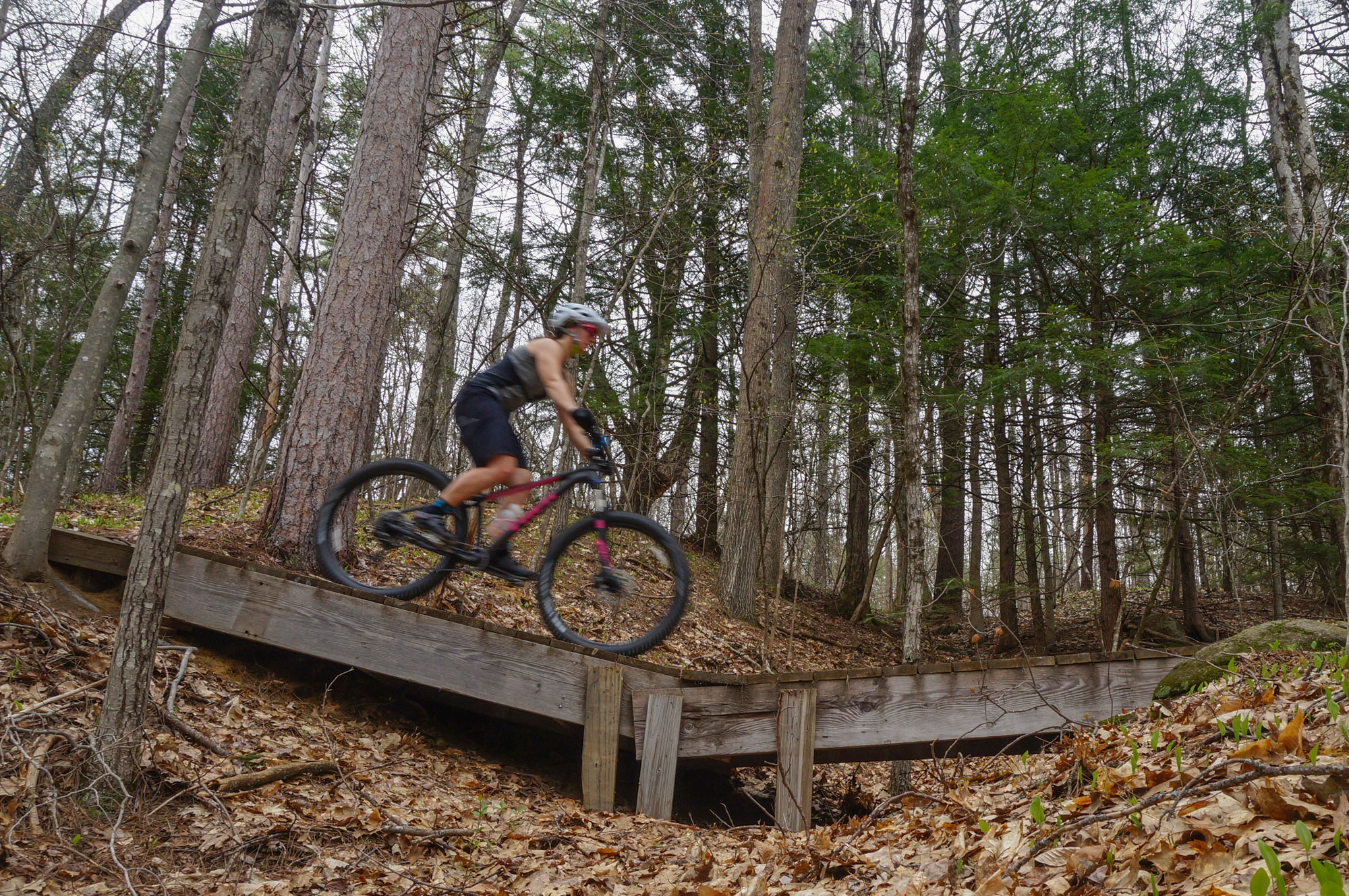The general rule in the hiking community is that uphill traffic takes priority over downhill traffic. But what works for hikers doesn’t always work for mountain bikers who are working against gravity, have a smaller field of vision, and can have difficulty restarting their bikes. To this end, many mountain bikers have come to the conclusion that this hiking-specific right-of-way rule shouldn’t always apply in mountain biking because there are several instances where the person riding uphill should yield to the downhill rider.

“The Establishment”
There are numerous reasons why bikers believe that the uphill rider is normally given precedence. The most notable of these justifications come from hikers, whose code of conduct dictates that downhill traffic gives way to uphill traffic. Since people have been hiking a lot longer than mountain biking, the belief that uphill traffic has the right of way has naturally crossed over from a more established sport.
Another major reason why many believe uphill riders have the right way comes from mountain bikers themselves. The International Mountain Bike Organization (IMBA) states in their rules of the trail that “Bicyclists traveling downhill should yield to ones headed uphill, unless the trail is clearly signed for one-way or downhill-only traffic.” While the IMBA acknowledges a significant exception to their rule, they miss more obvious examples of when (and why) uphill riders should move aside for downhill riders. For all those reasons, until a new norm takes root, it’s best to stay alert and assume the uphill rider thinks you’re going to get out of their way. But here are five reasons to yield the trail to downhill riders.
1. Downhill Bikers are Faster
Downhill bikers are typically traveling at faster speeds than uphill bikers. An uphiller’s slower speed means they need less space to brake and that it is easier for them to move aside. Because of the speed of downhill bikers, it’s often also safer for an uphill biker to yield to the downhiller—jamming on the brakes or trying to dismount your bike while descending a steep hill is a recipe for disaster. Higher downhill speeds also mean a quicker interaction between the passing parties and a minimal amount of disruption to both bikers’ rides.
2. It’s Better for the Trails
Braking at a higher rate of speed is not only more difficult/less safe for downhill riders—it also does more damage to the trail. Just think of the dirt your bike tires scrape off when you lock up the wheels at speed compared to coming to a stop at slow speed. Also, since uphill bikers are traveling at a slower speed, they can more carefully select where they move aside—like a place that causes the least amount of disturbance to the trail and surrounding environment.

3. Uphill Bikers Have More Warning
Downhill bikers aren’t just faster than uphillers, they’re louder. The sound of the wind, knobby tires traveling at a high rate of speed, freehubs, and suspension working will drown out the sounds of an uphill rider—no matter how hard they’re breathing. They also let the uphill rider know that traffic is coming from the other direction. As such, uphillers have a much greater opportunity to anticipate approaching riders and get safely out of the way.
4. Flow of Traffic
A lot of riding destinations have unwritten or established rules for the flow of traffic that favor the downhill rider. For example, there’s no rule against riding up Mighty Chicken trail at Franklin Falls, but 99.9% of the traffic it sees is pointed downhill. Consequently, custom dictates that this is a downhill trail. In a similar vein, the Big Bear trail at Bear Brook gives downhill riders precedence—it’s the only trail in the park with a clearly designated right of way—therefore, the majority of riders choose to climb on other trails.
5. Fun Factor
Going downhill is simply more fun! While climbing is part of mountain biking—a part that some even enjoy—most riders are out for the descents. When yielding to a downhill rider, you are favoring fun and hopefully acquiring karma that ensures any riders you encounter on your descent will extend you the same courtesy.
Safe and Courteous
Who has the right of way when mountain biking—the uphill or downhill rider—isn’t black and white, but one thing is for sure: we should treat each other politely and err on the side of safety. If you can easily get out of the way for another rider, do so, and hopefully, the same kindness is paid to you.

Tim Peck and Doug Martland
Tim and Doug met long ago at the Eastern Mountain Sports in Canton, Massachusetts. Bonding over a love of slick Quincy Quarry granite, White Mountain sufferfests, and scheming up adventures while folding tee-shirts, today Tim and Doug collaborate to write about their favorite outdoor activities and occasionally get nostalgic about tee-shirt tables.
Related Posts
April 2, 2024
10 Tips for Mountain Biking Etiquette During Mud Season
One rough spring could ruin the…




